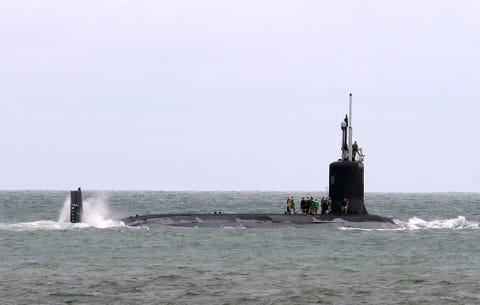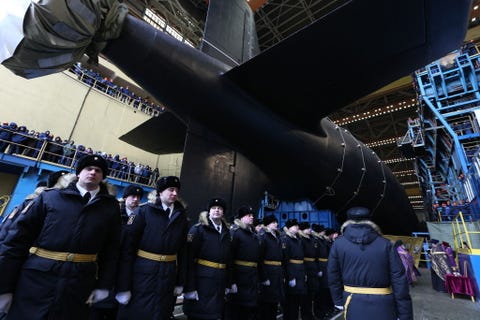The Navy’s Next Attack Submarine Will Be Big, Expensive
The service will transition back from multi-mission subs to more capable, deeper diving hunter-killers.
By Kyle Mizokami GETTY IMAGESPAUL HENNESSY
GETTY IMAGESPAUL HENNESSYThe U.S. Navy is designing a big, powerful attack submarine to fight the wars of the future. The new class will be considerably larger and more capable than the current Virginia class, with an emphasis on undersea combat. The new sub, SSN(X) will be a quiet, deep diving, heavily armed submarine meant to take on all comers in the mid 21st century.
Traditionally, the U.S. Navy’s nuclear attack submarine (SSN) fleet was given the mission of chasing down enemy surface fleets and attack submarines. This hunter-killer role required a submarine to locate enemy ships, stalk them, and then unleash a deadly ambush with missiles and torpedoes. This necessitated nuclear propulsion, a deep diving capability, powerful sonar, and long range guided weapons. This resulted in today’s Seawolf class. The three Seawolf submarines weigh 9,138 tons submerged, practically fly underwater at 35 knots, are equipped with eight torpedo tubes, and can dive to 2,000 feet.

Attack submarine USS Topeka taking on torpedoes at Guam.
U.S. NAVY
The U.S. built only three Seawolf submarines from the late 1990s to early 2000s. Although the most advanced submarines ever built, the implosion of the Soviet Navy at the end of the Cold War effectively left them without an adversary. The projected cost was $33 billion for just 12 submarines. The Navy truncated the program to just 3 subs, each of which cost $4.4 billion each, and turned its attention to developing the smaller, more versatile, more affordable Virginia class. The Virginia boats have just four torpedo tubes and are limited to a depth of just 800 feet, but they are better suited to supporting a broader mission set, including intelligence collection and deploying Navy SEALs.
USNI News reports that the Navy is in the conceptual stages of a true successor to the Seawolf class, SSN(X). The rise of the Chinese Navy and the slow return of Russia’s submarine forces mean that the Navy must prepare for clashes with numerous and technologically advanced enemy fleets.

Kazan, an improved Yasen-class nuclear powered cruise missile submarine, March 2017.
GETTY IMAGESALEXANDER RYUMIN
Like the Seawolf class, SSN(X) will be large and a deep diver. Diving depth is particularly important given Russia’s new apocalypse torpedo, Poseidon, has a claimed operating depth of 3,128 feet. Designed to vaporize coastal cities and military facilities with up to a 100 megaton warhead, an incoming Poseidon torpedo would have to be stopped at all costs. In addition, Russia’s new Yasen-class cruise missile submarines have an estimated maximum depth of 2,000 feet.
According to USNI News the submarine will also shift back to torpedoes as its primary armament. While the Virginia class has fewer torpedo tubes and carries Tomahawk cruise missiles for striking targets on land, SSN(X) will mount more torpedoes and torpedo tubes for attacking ships above and below the waves. The new sub could also incorporate unmanned undersea vehicles (UUVs) for missions such as baiting enemy ships into a trap or providing terminal guidance for guided torpedoes while SSN(X) sneaks away.
SSN(X) will likely begin construction in the 2030s, after the Columbia-class ballistic missile submarines are completed. The Congressional Box Office estimates each submarine will cost $5.5 billion.
Source: USNI News
No comments:
Post a Comment